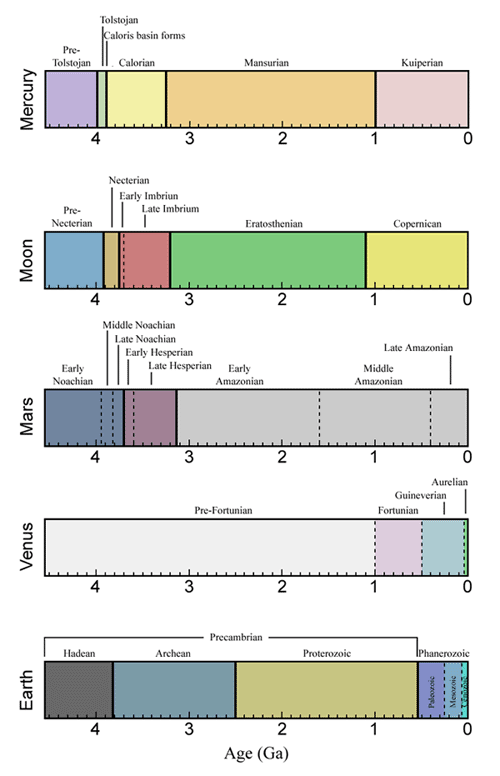

Geologic time scale: provides a system of chronologic measurement relating geologic units and events. This provides a framework for describing the timing and relationships between events that have occurred during the history of the solar system. Evidence from radiometric dating indicates that the planets are about 4.57 billion years old.
Earth: The Earth's time scale is generally organized into units delimited by major geological or paleontological events, such as mass extinctions. For example, the boundary between the Mesozoic and the Cenozoic Eras is defined by the extinction event that marked the demise of the dinosaurs.
Cratering: Time scales for the other planets are derived from the cratering history of the Moon. Cratering is one of the most prevalent geologic processes in the solar system. Since exposed surfaces accumulate craters overtime, the density of observed craters on a surface provide a means for dating that surface. We have samples of the Moon returned by the Apollo astronauts that have been radiometrically dated. From this the crater production rate for Moon has been established providing ages for crater densities. From this, absolute ages of other planetary surfaces can be inferred.
Mercury: From the hemisphere imaged by Mariner 10, a time-statigraphic system was developed. This time scale was divided into five units based on puctuated impact basin-forming events that could be used to define stratigraphic horizons, analogous to the lunar geologic time scale. Because of this, the geologic periods of the Moon and Mercury are named after impact basins.